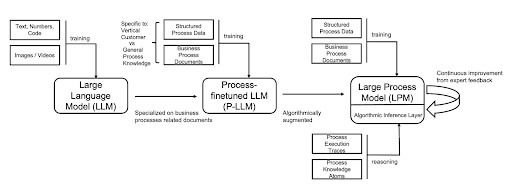Isn't it amazing how much businesses rely on cloud storage to keep their information accessible? But have you ever considered how vulnerable this data can be to cyberattacks? As technology evolves, so do hackers' methods of breaching systems.
That is where cloud vulnerability management comes into play, safeguarding important data from evolving risks. Here, we will focus on the latest trends and predictions in vulnerability management. Let's learn how staying informed and proactive can enhance the security strategy.
Embracing AI and Automation
AI and automation technologies will heavily influence the future of vulnerability management. These technologies promise to revolutionize how cloud environments detect and address gaps. AI-driven tools will enhance threat detection, identifying gaps with greater accuracy and speed. Automation will streamline the response process, allowing organizations to manage threats more efficiently.
Integration of Advanced Threat Intelligence
Advanced threat intelligence will be crucial in evolving safety practices and strategies. Integrating sophisticated threat intelligence feeds provides deeper insights into potential risks and gaps. This proactive approach will help businesses anticipate and mitigate risks before they escalate into significant issues. Real-time threat data integration will also improve threat assessment accuracy and security posture.
Increased Focus on Zero Trust Architectures
Zero-trust architectures are becoming essential in cloud vulnerability management tools. This security model requires continuous verification of user identities and device safety for access. Adopting Zero-Trust will protect sensitive data and systems as web-based storage becomes more complex. This approach will help minimize insider threats and ensure authorized access.
Enhanced Regulatory Compliance and Data Privacy
Stricter regulatory compliance and data privacy requirements are shaping vulnerability management practices. Organizations must align their strategies with evolving regulations like GDPR and CCPA. Ensuring web-based storages meet compliance standards is crucial for protecting sensitive data. Implementing robust management processes will help organizations maintain compliance amid regulatory changes.
Growth of Managed Security Service Providers (MSSPs)
Managed Security Service Providers (MSSPs) will be more significant in future risk management. As managing cloud vulnerabilities becomes more complex, organizations will seek MSSPs for specialized expertise. MSSPs will offer advanced solutions such as continuous monitoring and incident response services. Partnering with MSSPs allows organizations to access cutting-edge technologies and expert knowledge.
Proliferation of Multi-Cloud Environments
The rise of multi-cloud environments presents opportunities and challenges for cloud defense strategies. Managing risks across various platforms requires a cohesive strategy tailored to each environment’s safety needs. Businesses must develop comprehensive frameworks to handle the complexity of these setups. This trend will drive innovation in threat management tools and practices.
Evolution of Threat Detection Techniques
Threat detection techniques are evolving, shaping the future of security management. Emerging technologies like behavioral analytics and machine learning enhance risk detection capabilities. These advanced techniques allow organizations to identify unusual patterns and potential vulnerabilities early. Evolving this solution will prevent cyber threats and ensure robust protection.
Expansion of CSPM
Cloud Security Posture Management (CSPM) is expected to expand significantly, offering improved visibility and control. These tools will become more sophisticated, helping businesses manage security configurations effectively. Adopting CSPM solutions ensures enforced security policies and promptly addressing vulnerabilities, enhancing safety. This expansion will lead to a more proactive approach to safeguarding cloud environments.
Rising Importance of Cloud Native Security Tools
Cloud-native security tools are becoming essential for protecting complex web-based storage effectively. These tools are designed to integrate seamlessly with cloud platforms, offering enhanced protection. They provide real-time visibility and automated threat response tailored to specific needs. Leveraging these security tools ensures organizations' more resilient and adaptive safety posture.
Partnering with trusted agencies strengthens security efforts in an increasingly complex cyber world. Advanced cloud vulnerability management solutions provide the expertise and tools needed for robust protection. So, are you ready to take your security strategy to the next level with expert support? Choose a reliable partner to stay ahead of threats and secure your IT infrastructure.


















